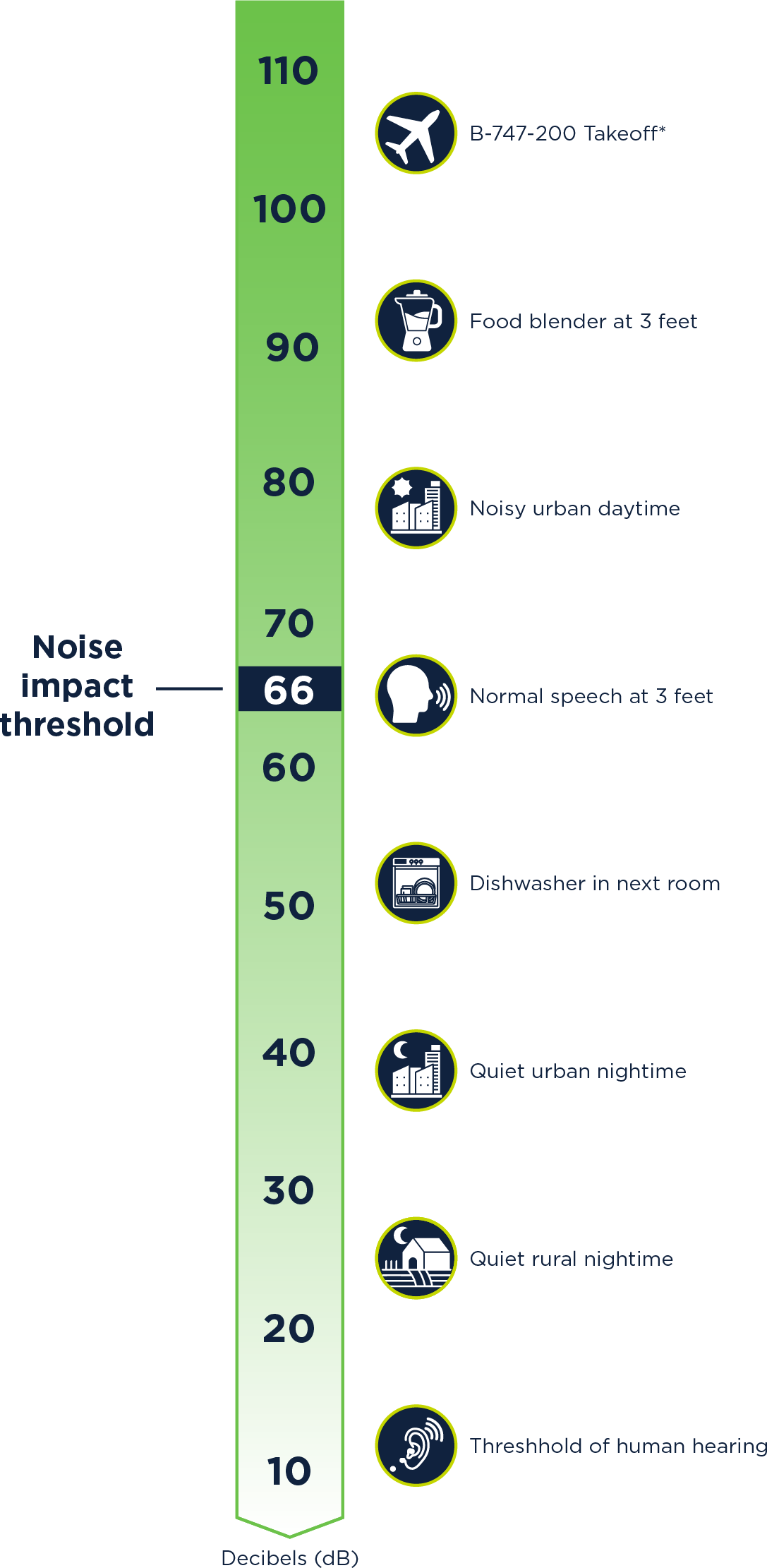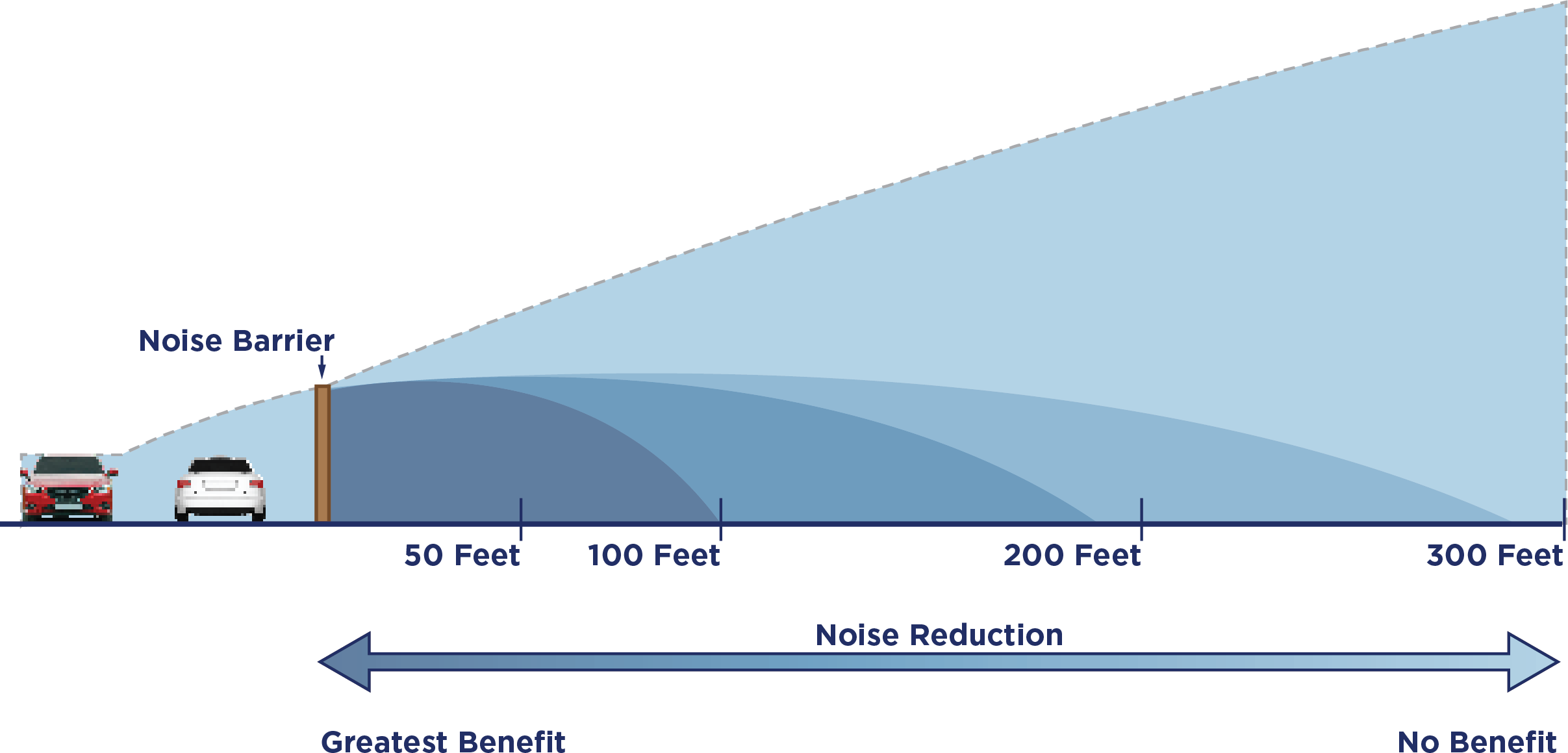Potential traffic noise is being studied as part of the K-10 Capacity Improvements Project Environmental Assessment (EA). The EA will help identify and evaluate the project’s potential impacts on the natural and human-made environments so the KDOT can make informed decisions about solving transportation issues while minimizing impacts such as noise.
What is Noise?
A noise evaluation is done to determine whether sound from the highway impacts adjacent properties. Noise evaluations happen when there is a significant change in roadway alignment or, like K-10, when lanes may be added. The evaluation involves measuring and modeling noise levels while accounting for terrain, traffic type and volume and distance to adjacent properties. The results are compared to federal and state regulations for considering unwanted sound to be an impact — generally set at an average of 66 decibels (dB) or greater for residences. Conducting this type of evaluation helps an agency like KDOT determine whether traffic sounds exceed the noise impact threshold and whether noise abatement must be considered as part of the project.
Identifying Noise Impacts
A detailed software model is used to assess existing noise and predict future noise levels throughout the project. Field measurements are taken to validate the model. Noise levels are considered an impact to residences if either:
- Future noise levels are predicted to average 66 decibels or louder during the loudest hour of the day, or
- The project is predicted to increase noise levels by more than 10 decibels.
If either is true, then noise abatement measures will be considered for impacted locations.
Noise Level Decibel Chart

Determining Noise Reduction Strategies
Noise reduction strategies may be used where noise impacts are identified. The most commonly used solution is building noise walls, but other techniques include earthen berms, traffic management and using undeveloped property as a buffer. Noise abatement strategies must be feasible and reasonable in order to be recommended for a project.
Noise abatement strategies are considered feasible if:
- They are physically constructible in a way that creates no major additional environmental impacts, and
- They can effectively reduce noise by 5-7 decibels.
KDOT considers noise abatement strategies, such as noise walls, to be reasonable if:
- An effective wall can be built.
- The size of the wall is less than 1,200 square feet per benefited receptor.
- The majority of benefited receptors can achieve at least a 7-decibel reduction.
The affected community must also desire abatement measures. This is determined by:
- Engaging with property owners and tenants to share evaluation results; and then
- Conducting a vote of benefited receptors to determine if they want the proposed noise wall.
Noise Barrier Effectiveness

Frequently Asked Questions
A benefited receptor is a property that receives at least a 5-decibel (dB) reduction in noise levels from the noise walls.
A detailed Federal Highway Administration (FHWA) noise model is used to analyze and optimize different noise wall designs at locations within about 500 feet of K-10. The model assumes that the noise receptor faces the highway at about five feet from the exterior wall of each home. A receptor is considered benefited when at least a 5-decibel reduction is predicted to occur from noise abatement with the future roadway configuration and traffic levels.
The FHWA requires states to define a noise reduction between 5 decibels and 10 decibels as the definition of a benefited receptor. Typically, anything less than these amounts will be considered barely perceptible by the human ear, and anything more is not practical to achieve. The KDOT policy defines 5 decibels as a benefited receptor but attempts to design noise walls to achieve a 7-decibel reduction or greater.
The noise modeling always considers the loudest hour of the day. This usually occurs during the a.m. or p.m. rush hour in corridors like K‑10.
